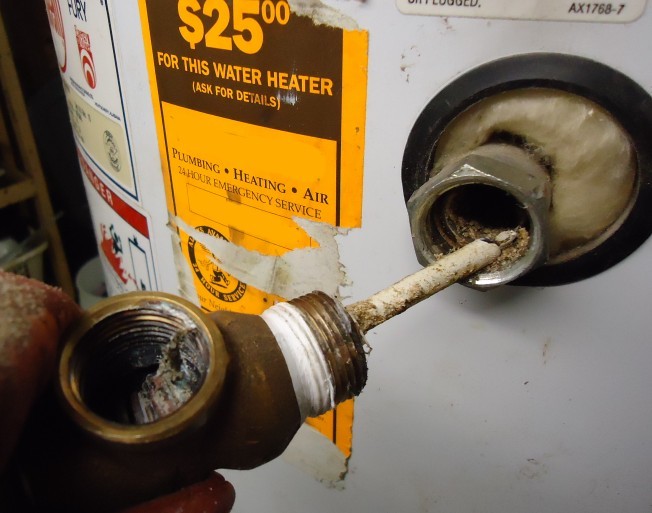What're your ideas with regards to Tips For Maintaining Your Hot Water Heater?

Hot water is crucial for everyday comfort, whether it's for a rejuvenating shower or cleaning meals. To ensure your warm water system runs efficiently and lasts much longer, normal upkeep is vital. This article offers practical pointers and insights on just how to preserve your home's warm water system to avoid interruptions and costly fixings.
Intro
Keeping your home's warm water system may seem overwhelming, yet with a few basic steps, you can guarantee it operates efficiently for years to find. This guide covers every little thing from comprehending your warm water system to DIY upkeep ideas and knowing when to employ expert aid.
Significance of Preserving Your Hot Water System
Routine upkeep not only expands the lifespan of your warm water system yet also ensures it runs efficiently. Disregarding maintenance can bring about reduced efficiency, higher energy costs, and also early failure of the system.
Signs Your Hot Water System Demands Upkeep
Knowing when your warm water system requires attention can avoid major problems. Keep an eye out for signs such as inconsistent water temperature level, odd sounds from the heating system, or corroded water.
Understanding Your Hot Water System
Prior to diving right into upkeep tasks, it's useful to comprehend the fundamental elements of your warm water system. Normally, this consists of the water heater itself, pipelines, anode rods, and temperature controls.
Regular Monthly Maintenance Tasks
Regular regular monthly checks can assist capture minor problems prior to they rise.
Purging the Hot Water Heater
Flushing your water heater gets rid of sediment accumulation, enhancing effectiveness and extending its life.
Checking and Replacing Anode Rods
Anode poles stop deterioration inside the storage tank. Inspecting and replacing them when worn out is important.
Inspecting and Adjusting Temperature Settings
Readjusting the temperature level setups makes sure ideal efficiency and security.
Do It Yourself Tips for Upkeep
You can execute numerous upkeep tasks on your own to maintain your warm water system in leading condition.
Checking for Leakages
On a regular basis inspect pipes and connections for leaks, as these can bring about water damages and higher bills.
Evaluating Stress Alleviation Valves
Checking the stress safety valve ensures it functions appropriately and avoids excessive stress accumulation.
Shielding Pipes
Insulating hot water pipelines minimizes warmth loss and can save energy.
When to Call a Professional
While DIY upkeep is helpful, some problems require specialist experience.
Complicated Issues Calling For Expert Help
Examples consist of major leakages, electrical troubles, or if your water heater is regularly underperforming.
Regular Expert Maintenance Benefits
Expert maintenance can consist of extensive inspections, tune-ups, and making certain conformity with safety criteria.
Final thought
Normal maintenance of your home's warm water system is important for effectiveness, long life, and cost savings. By adhering to these suggestions and recognizing when to look for professional assistance, you can make sure a reputable supply of warm water without unforeseen disruptions.
How to Maintain an Instant Hot Water Heater
Before tinkering with your hot water heater, make sure that it’s not powered on. You also have to turn off the main circuit breaker and shut off the main gas line to prevent accidents. Also turn off the water valves connected to your unit to prevent water from flowing into and out of the appliance. 2. When you’re done, you have to detach the purge valves’ caps. These look like the letter “T” and are situated on either side of the water valves. Doing so will release any pressure that has accumulated inside the valves while at the same time avoid hot water from shooting out and burning your skin. 3. When the purge valves’ caps are removed, you have to connect your hosing lines to the valves. Your unit should have come with three hoses but if it didn’t, you can purchase these things from any hardware or home repair shops. You can also get them from retail stores that sell water heating systems. Read the user’s manual and follow it to complete this task properly. When the hosing lines are connected, open the purge port’s valves. 4. You should never use harsh chemical cleaners or solutions when cleaning your unit. Make use of white vinegar instead. It should be undiluted and you’ll probably use about 2 gallons. 5. Now flush your water heater. This task should probably take about 40 minutes. We can’t give you specific directions for this because the procedure is carried out depending on the type, model and brand of your heater. With that being said, refer to the user’s manual. 6. When you’re done draining the unit, you have to turn off the purge port valves again. Remove the hosing lines that you earlier installed on each of the water valves. Put the valve caps (purge port) back in their respective places and be very careful so as not to damage the rubber discs that are found inside these caps. 7. Now that everything’s back in place, check your user’s manual again to find out how to reactivate your water heating system. 8. Once it is working, turn one of your hot water faucets on just to let air pass through the heater’s water supply pipes. Leave the tap on until water flows smoothly out of it. https://www.orrplumbing.com/blog/2014/september/how-to-maintain-an-instant-hot-water-heater/

As a keen reader about Tips on Maintaining a Water Heater, I imagined sharing that excerpt was really useful. Make sure you take a moment to promote this blog post if you liked it. Thank-you for going through it.
Visit Url